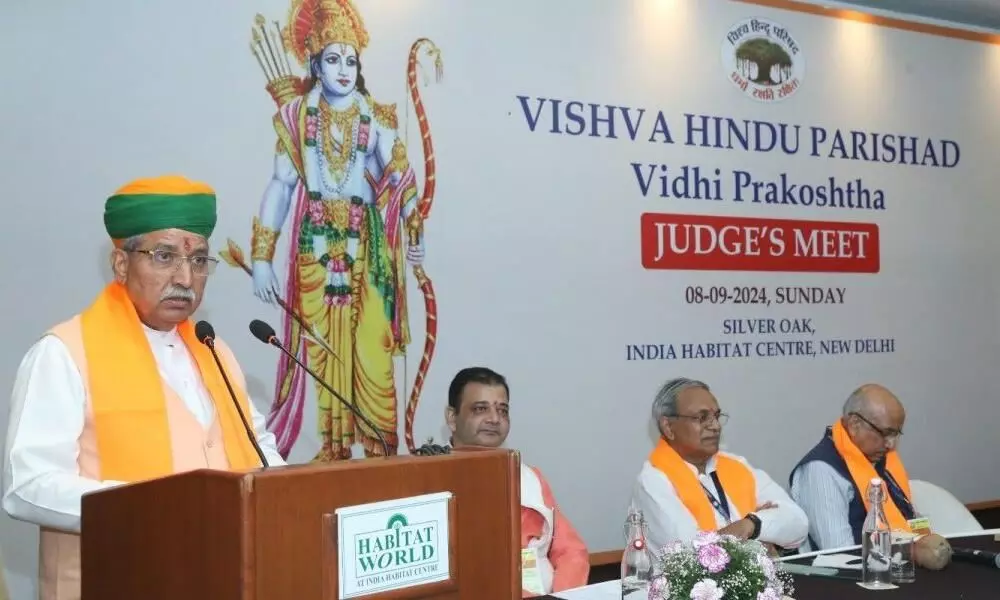
Judges who upheld hijab ban, 'dilution' of SC/ST Act attend VHP meeting
text_fieldsAmid the row over Prime Minister Narendra Modi’s participation in Ganapati Puja at Chief Justice of India DY Chandrachud’s residence, triggering a discussion on the influence of the elected executive in the judiciary, reports suggest that the VHP’s legal cell-organised meeting was attended by about 30 retired judges, including those who pronounced the judgement against the hijab in Karnataka.
The Vishwa Hindu Parishad (VHP) organised a significant meeting involving its legal cell and approximately 30 retired judges from the Supreme Court and various high courts on September 8.
Although the VHP did not disclose the names of the judges in attendance, reports revealed that former Supreme Court judges Adarsh Kumar Goel and Hemant Gupta were present at the event.
Justice Gupta had upheld the Karnataka High Court’s decision allowing the ban on hijabs in classrooms, while Justice Goel had ruled in 2018 on a controversial bench that granted anticipatory bail under certain circumstances related to the SC/ST (Prevention of Atrocities) Act, The Wire reported.
Both judges held key positions following their retirement, with Goel having served as the chairperson of the National Green Tribunal until last year, and Gupta currently chairing the India International Arbitration Centre.
The involvement of high-profile former judges in a VHP-organised meeting is particularly noteworthy given the sensitive nature of the issues discussed. These include the VHP's claims over the Gyanvapi mosque in Varanasi and the Shahi Idgah in Mathura, both of which are under judicial scrutiny.
The meeting reportedly addressed legal matters of national importance, including ongoing disputes surrounding the Varanasi and Mathura temples, the recent Waqf (Amendment) Bill, and religious conversions. Union Law Minister Arjun Ram Meghwal was also in attendance, highlighting the political significance of the event.
The meeting, though legal in nature, has raised eyebrows due to its intersection with ongoing court cases and its broader implications for the Hindutva agenda.





